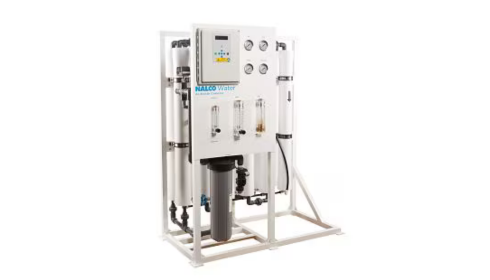Walk into any office break room, factory floor, or restaurant kitchen, and you’ll find something we often take for granted: clean, fresh water. It’s poured into coffee machines, mixed with ingredients, used in industrial processes, or simply handed to employees in a cup. Yet behind that simplicity lies a complex reality. Businesses of all sizes are beginning to realize that water quality isn’t just a side note — it can influence everything from employee health to machinery lifespan and even customer trust.
The Hidden Costs of Bad Water
Most people think of water issues in terms of taste or smell. Sure, hard water might leave streaks on glasses or an odd metallic tang in your drink, but in commercial or industrial environments, the consequences run deeper. Mineral buildup can clog pipes and wear down expensive machines. Contaminants can compromise products, damage reputations, and in the worst cases, create real health hazards.
That’s why companies are moving past the old “tap and filter jug” mentality. Instead, they’re seeking reliable, scalable solutions designed specifically for heavy use. One of the most popular approaches is the commercial reverse osmosis system install, which provides consistent, high-quality water even when demand is high. Businesses appreciate not just the peace of mind but also the cost savings that come from fewer breakdowns and reduced reliance on bottled water deliveries.
Beyond Bottled Water: Why Purification Systems Matter
Think about the last time you grabbed a plastic bottle of water at a meeting. Multiply that by hundreds of employees and thousands of bottles over a year, and the environmental and financial costs skyrocket. Companies are under pressure — from both employees and regulators — to minimize waste. A well-installed purification system provides a sustainable alternative.
These systems don’t just remove chlorine or sediment. They tackle the microscopic threats too, such as lead, arsenic, nitrates, and other contaminants that can sneak into local supplies. For industries like food service or healthcare, that level of purification isn’t optional; it’s essential. Customers and patients trust that every drop is safe.
When Things Break Down
Of course, like any piece of equipment, purification systems need care. Pumps fail, membranes clog, and electronic controllers sometimes decide to quit at the worst possible moment. For factories or hotels, even a short interruption can cause massive disruption. That’s where timely industrial RO system repair comes into play. Skilled technicians who understand the nuances of these systems can quickly diagnose problems and get water flowing again.
What often surprises business owners is how much proactive maintenance can reduce emergencies. Just like servicing a car before it breaks down on the highway, scheduling routine checkups for an RO system saves headaches (and money) down the line. It also extends the system’s lifespan, which is no small thing given the investment required.
Scaling to Fit Different Needs
A coffee shop doesn’t need the same setup as a pharmaceutical lab, and a school has different priorities than a steel plant. The beauty of modern purification technology is how customizable it has become. Systems can be designed to fit into a small backroom or expanded to supply an entire industrial campus.
In commercial spaces, a commercial drinking water purification system often sits quietly in the background, doing its job day after day. Employees may not even notice it beyond the taste of their coffee improving or their water glasses staying crystal clear. But management notices — fewer complaints, lower operating costs, and a greener reputation in the eyes of both staff and customers.
The Balance Between Investment and Payoff
There’s always a moment of hesitation when the upfront price tag comes into view. Business owners weigh the immediate cost against what feels like an invisible return. After all, water issues aren’t always obvious until something goes wrong. But those who take the plunge often find the investment pays for itself faster than expected.
Here’s why: fewer service calls for appliances, longer equipment lifespans, reduced waste from bottled water, and even boosted employee satisfaction. In industries where safety and compliance matter, having documented water quality can also shield a company from liability. In today’s climate of customer reviews and social media, one incident linked to poor water can spiral into a PR nightmare. A reliable purification system is a form of insurance against that.
A Human Angle: Stories from the Ground
Take, for example, a family-owned bakery that struggled with inconsistent water quality. Their breads sometimes turned out differently depending on the mineral levels, frustrating both staff and customers. After installing a tailored purification setup, the problem vanished. The taste stabilized, the texture stayed consistent, and their reputation soared.
Or consider a small manufacturing unit where machinery frequently broke down due to mineral buildup. Repairs were eating into profits. After consulting with specialists and installing an RO system, breakdowns dropped dramatically. Workers noticed less downtime, and the owner noticed healthier margins.
These aren’t flashy stories, but they illustrate the point: water is quietly but fundamentally linked to success.
Looking Ahead: Smarter Systems on the Horizon
Technology in this space isn’t standing still. Smart purification systems with built-in sensors now alert managers before something goes wrong. Imagine a dashboard that shows water purity levels in real time or sends a notification if pressure drops. For businesses managing multiple locations, this kind of insight is invaluable.
There’s also growing emphasis on energy efficiency. Systems are being designed to waste less water during filtration and consume less power overall. Given rising utility costs, that’s no small advantage. Sustainability is no longer just a buzzword; it’s becoming an operational necessity.
Wrapping It All Together
At the end of the day, water isn’t just water. For businesses, it’s a lifeline running through every operation, from the cafeteria to the production floor. Treating it with the seriousness it deserves pays dividends — in reliability, safety, and even brand reputation.
So the next time you sip a glass at work, remember: behind that clear liquid may be a complex web of pipes, filters, and membranes, all working together quietly. Investing in a proper system isn’t about luxury; it’s about resilience.
Clean water keeps employees happy, customers safe, and businesses thriving. And in a world where trust and reliability are worth their weight in gold, that’s not something to overlook.





